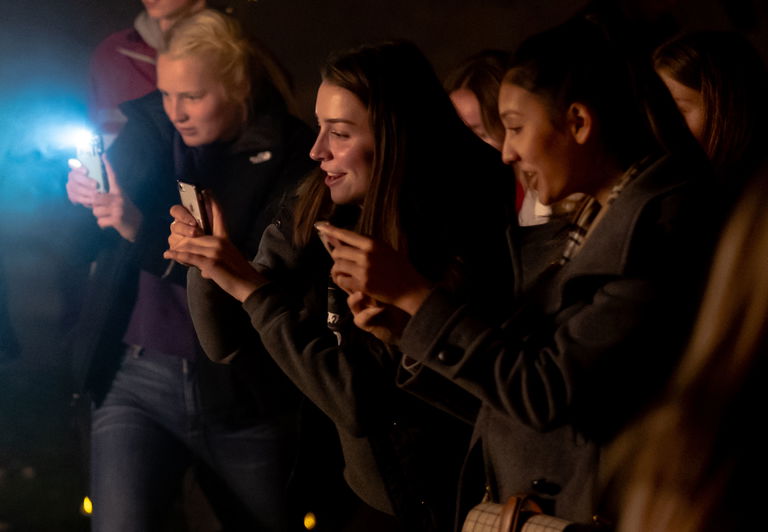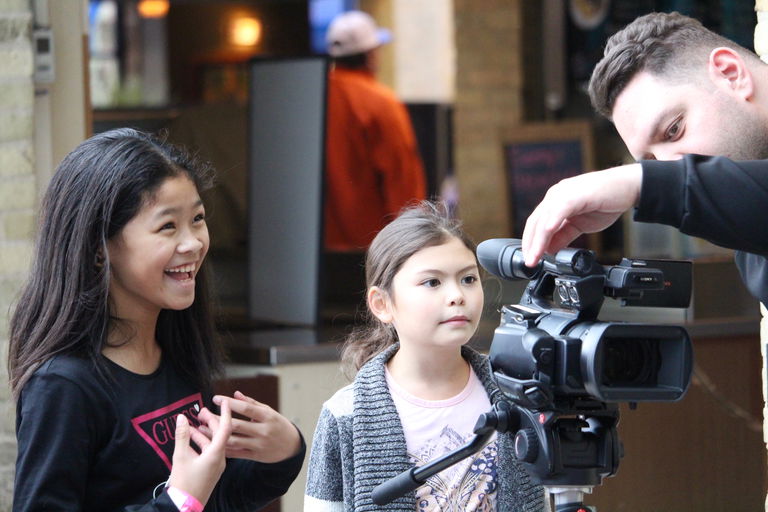Documenting Your Event
If a Culture Days event took place, but no one was there to record, take images, or document it, did it really happen? Of course it did! But making sure you properly document your event goes a long way in supporting engagement and future programming.
Making sure that you have proper documentation of your event should involve more than taking photos and filing them away until next year. Ensuring you are properly documenting provides you with lots of materials and content to help promote the following year’s activities, but also helps to appeal to sponsors and funders when undertaking development or fundraising, and can help raise the profile of the work you do all year round. Planning to document your event well can sometimes feel daunting, especially if one does not have much experience with photography. Never fear! On this page, you’ll find some tips that will help make your event memorable and provide you with great material for your promotional campaigns.
Capturing Culture Days on camera
We all know that great photos and video help to maximize the impact of any event by sharing it with those who couldn’t be there. But getting those great images and video clips isn’t always easy.

If you are organizing digital or self-guided programs, they can still be visually documented through screenshots or photos submitted by participants.
Who to hire?
The answer to this question will depend on a few factors such as budget, length of the event, the nature of the program, etc. If you or someone you know is comfortable operating a camera, it can be a great way to spend less on documenting your event. However, you might find yourself too busy running the event to document it yourself. In this case, if budget allows it, hiring a professional photographer is a great option.
Tips from a professional
In 2017, Culture Days hosted a webinar on the subject of documenting events with both still photography and video. Glenna Turnbull, a photographer from Kelowna, talked about the best ways to photograph Culture Days events. If you’re going to document an activity yourself, here are some of her tips for success:
Make sure your equipment is prepared: Clean lenses, full battery, enough memory space. Get a variety of shots (different angles, portrait vs. landscape, still vs in action, etc…) Optimal camera position: When photographing people, try to photograph them straight on rather than photographing down at them. Lighting: When outside find shade for more even lighting, be careful of backlighting; when shooting in theatre lighting bring your ISO up instead of bringing your shutter speed down. Keep your eyes open for the unexpected. Don’t forget to capture the audience!
Videography
Video is a great way to document your events and is a very compelling medium for capturing audience attention. It is an immersive experience that draws people in and therefore can give great visibility to your programming. It can also be a great tool to boost your social media presence! Here are some types of social media video content that Pedro Miguez, from Rebel Creative Media, mentioned during the webinar:
Announcements Contests / Promotions Weekly Video Blog Interviews / Testimonials Facebook Live Videos Invitations Event Coverage
It is important to effectively plan before shooting a video, and defining the goals of the video is a good place to start. This can include thinking about what your message is, who it is for, where people will be viewing your video, and what the desired outcome of the video is. Once you have answered some of these questions, you can begin to build a schedule for the production, post-production, and release of your video content. Having a clear calendar will help you stay on track with your video projects, especially if you have multiple events to promote and cover. You do not need to have a detailed shot for shot plan for your video, but it is useful to know ahead of time the general format it will take (run time, types of shots, etc.). Knowing a little bit about the location of the video ahead of time will help you when it comes to positioning yourself while filming, and lets you plan ahead for lighting needs, noise level considerations, and other factors.
Poor audio is a very quick way to lose an audience. If shooting an event outside or in a place with a lot of background noises, it is useful to enhance your audio by using an external microphone, especially if you are shooting with your smartphone.
Here are Pedro’s shooting tips when it comes to video:

- Do some trial runs in the space to see how the video will look and so you can make any necessary adjustments before hand
- Try to use natural light as much as you can
- Try to have more light on the main subject of your video than on the rest of the frame
- Try not to face windows when shooting indoors
- Avoid distracting elements in the background of your composition
- Get creative and explore different camera angles
- Go back and forth between wide shots and close-ups
Live videos can be a great way to promote your event while it is happening and to provide access to people who cannot attend in person. Here are the things you need to make a live video:
- Smartphone with a decent data plan
- Streaming app from your desired platform (facebook, twitter, instagram)
- Microphone (optional)
- Portable battery pack (if you will be shooting for a long time)
Making videos requires editing, which can be done on a number of different software. If you are doing simple editing directly from your smartphone, there are many free apps you can find that will work for your purposes. For more complex editing on the computer, Pedro recommends iMovie and Adobe Premiere.
Asking permission to use/share the content
It is important that subjects who are clearly identifiable in a photograph or video are aware that they will be or have been captured on camera and provide consent for the content to be used in promotional material. A subject can sign a waiver that will make this consent official. You can find a sample consent form by signing in to your dashboard on our website. Another strategy is to include a disclaimer on all event descriptions which states that by attending, members of the public are consenting to potentially being photographed. It is important to note that at any point, the subject of a photograph can withdraw this consent and ask that their image not be used on public platforms. If the subject of the photograph or video is under the age of 18, their parent of guardian must provide consent. If a person is pictured in a screenshot, it is still important to ask for their permission.
Measuring your event’s success
It’s not all about the attendance numbers! Over and over we hear from Culture Days event organizers that the quality of engagement with the public is what makes participating a worthwhile experience. Here are some important measures of success to keep in mind when planning and subsequently evaluating your Culture Days events. When evaluating your activity, consider how many of these “qualitative” measures you achieved:
Did you reach new potential clients and customers?
Be sure to have a sign-in sheet, guest register, comment card, or some other way to collect participants contact information so you can inform them of your future activities. Advertise your paid services so people know what you have to offer in the 362 days that aren’t Culture Days. If you are a visual or craft artist, you can also have artwork for sale visible and clearly priced for anyone wishing to purchase a piece before or after participating in your activity. Similarly, musicians can have CDs for sale. You can find a sample sign-in sheet by signing in to your dashboard on our website.
Did you promote other future events?
Do you have a performance, exhibition, or workshop coming up? Have promotional materials for upcoming events available and accessible. Display registration forms for upcoming classes or workshops, and have tickets for any upcoming performances on hand.
Did you forge some new year-round relationships?
Consider collaborating with other artists or arts and cultural organizations or institutions. You might build some partnerships that open the door for future work. Culture Days is a great time to reach out to local businesses, government representatives, and media – it’s all about public engagement and letting people know who you are and what you do.
Did you raise your profile?
Interactive arts and cultural activities are attractive to the media. Approach them to cover your Culture Days events.
Did you build support?
Do you need volunteers? Are you an organization with charitable status that relies on public support through donations? Are you looking for a board member? Culture Days is a great chance to bring people into your organization, company, or festival and show them how they can be involved and how their support can help you do your work!
Did you connect with community leaders?
Invite your city/town councillor, mayor, provincial/territorial elected officials, MP or other community leaders and influencers to attend your activity. Introduce yourself and familiarize these community leaders with your work—this can help to build a community network of arts and culture supporters and advocates.
Documenting an event is not only about taking photos and videos. It can also be useful to keep a record of the things that were successful about an event and the things that did go as well. This information will become helpful when planning subsequent activities.